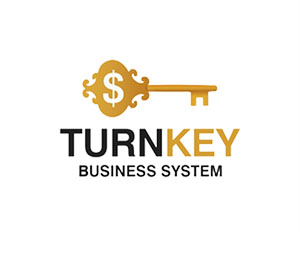
The Market That 70% of Beginners Approach Wrong
The forex market operates 24/5, offers unmatched liquidity, and provides leverage amplifying both profits and losses.
Sounds perfect, right?
There's just one problem: 70-80% of retail forex traders lose money, and most fail within the first year because they skip essential steps separating consistently profitable traders from those gambling with leverage.
Sounds perfect, right?
There's just one problem: 70-80% of retail forex traders lose money, and most fail within the first year because they skip essential steps separating consistently profitable traders from those gambling with leverage.
The Foundation: Understanding Currency Pairs and Market Structure
Forex trading involves simultaneously buying one currency while selling another. Currencies trade in pairs—EUR/USD, GBP/USD, USD/JPY—where the first currency is the base and the second is the quote. When EUR/USD quotes at 1.1700, one euro equals 1.17 dollars. If you believe the euro will strengthen, you buy EUR/USD.Rise to 1.1800? Profit.
Fall to 1.1600?
Loss. Simple mechanically, brutally difficult profitably.
Currency pairs divide into three categories.
Majors pair the US dollar with G7 currencies (EUR/USD, USD/JPY, GBP/USD) accounting for 75% of volume, offering tight 0.1-3 pip spreads and exceptional liquidity perfect for beginners. EUR/USD dominates with $1.71 trillion daily turnover representing 22.7% of global volume—the pair's predictable patterns and abundant resources make it the ideal starting point.
Minors exclude the US dollar (EUR/GBP, GBP/JPY) providing diversification with slightly wider 3-6 pip spreads. Exotics pair majors with emerging markets (USD/TRY, USD/ZAR) offering dramatic swings but 10-50+ pip spreads, lower liquidity, and manipulation risks—avoid these until mastering majors.

The Market That 70% of Beginners Approach Wrong
Leverage: The Double-Edged Sword Destroying 70% of Accounts
Leverage allows controlling positions larger than account capital.With 100:1 leverage, $1,000 controls $100,000—a 1% favorable move returns 100%, but a 1% adverse move eliminates everything. US traders face mandatory 50:1 caps for majors and 20:1 for exotics following 2010 Dodd-Frank reforms. European MiFID II limits retail leverage to 30:1.
These restrictions exist because overleveraging represents the single most destructive beginner mistake. Offshore brokers offering 500:1 leverage sound attractive until you realize a 0.2% adverse move—trivial daily fluctuation—liquidates entire accounts.
The math is unforgiving. Using 500:1 leverage with just 10% of capital in active positions creates effective 50:1 exposure. A 2% adverse move—entirely normal market noise—eliminates 100% of allocated capital. Even conservative 50:1 leverage becomes lethal without proper position sizing. The antidote? Never risk more than 1-2% of total account per trade regardless of leverage available. With $10,000 and 50-pip stop-loss on EUR/USD, risk $100-200 maximum, equating to 0.2 standard lots (two mini lots). This mathematical approach ensures ten consecutive losses only reduce accounts 18%, entirely recoverable.
Choosing Your Broker: Regulation Determines Whether Your Funds Are Safe
Broker selection determines capital safety, trading costs, platform capabilities, and educational support. Regulatory oversight provides essential protections: segregated client funds, negative balance protection preventing losses exceeding deposits, transparent fees, dispute resolution, and mandatory capital requirements ensuring solvency. Verify licensing with relevant authorities—CFTC/NFA (USA), FCA (UK), ASIC (Australia), CySEC (Europe). Unregulated brokers operate beyond oversight with zero recourse when problems arise.
Trading costs compound rapidly. ECN brokers offer raw spreads from 0.0-0.5 pips plus $3-7 commissions per standard lot, benefiting high-volume traders. STP brokers provide wider spreads without commissions, simplifying costs for beginners. A scalper executing 20 daily EUR/USD trades with 1.5-pip spreads pays 30 pips daily (900 monthly)—approximately 9% of account value on standard lots. Platform matters equally. MetaTrader 4 remains the industry standard with user-friendly interface, extensive charting, and automated EA support. MT5 adds enhanced features. Test extensively through demo accounts before committing real capital.
Technical Analysis Basics: Reading Charts Without Drowning in Indicators
Technical analysis studies historical price patterns assuming past behavior predicts futures movements. Start with support levels where buying historically prevented declines, resistance where selling capped advances, and trend lines connecting sequential highs or lows indicating momentum. Candlestick patterns reveal sentiment—doji showing indecision, engulfing patterns signaling reversals, hammers suggesting bottoms.
Moving averages smooth price fluctuations revealing trends. A 50-period simple moving average plots the mean of last 50 closes—price above indicates uptrend, below suggests downtrend. Crossovers generate signals: when faster 20-period MA crosses above slower 50-period MA, bullish momentum strengthens.
Relative Strength Index measures momentum on 0-100 scale—above 70 indicates overbought conditions vulnerable to corrections, below 30 suggests oversold primed for bounces. Don't overcomplicate: beginners drowning charts in dozens of indicators create analysis paralysis rather than clarity.
Your First Trading Strategy: Trend Following That Works
Trend following represents the most accessible beginner strategy based on the principle that established directions persist until clearly reversing. On daily charts, plot 20-period and 50-period exponential moving averages. When faster 20 EMA crosses above slower 50 EMA with both sloping upward, uptrend establishes. Draw trend lines connecting swing lows. Wait for pullbacks toward support or rising 20 EMA. Enter long when price bounces with bullish candlestick patterns, placing stop-loss below recent swing low. Target previous resistance or use trailing stops protecting gains.For downtrends: 20 EMA crossing below 50 EMA signals bearish momentum. Wait for rallies toward resistance or declining 20 EMA. Enter short when price rejects resistance with bearish patterns, placing stop-loss above swing highs. This systematic approach removes emotion—you're following predetermined rules based on objective conditions rather than fear or greed. Test thoroughly through demo accounts proving consistency over 100-200 trades before risking real money.
Risk Management: Why 1-2% Per Trade Separates Winners from Losers
Risk management separates consistently profitable traders from those who blow up despite correct predictions. Never risk more than 1-2% of account per trade regardless of confidence. With $10,000, maximum risk is $100-200. This ensures ten consecutive losses—which inevitably occur—reduce accounts just 18%, entirely recoverable. Contrast with 10% risk per trade destroying 65% of capital after ten losses, psychologically and financially devastating.Risk-reward ratios quantify profit potential relative to loss. Profitable traders target minimum 2:1 or 3:1—risking 50 pips for 100-150 pip gains. While win rates decrease with higher targets, mathematical edge accumulates: 40% win rate with 3:1 risk-reward generates profitability (4 winners × +150 pips = +600 versus 6 losers × -50 pips = -300, net +300), whereas 40% with 1:1 produces losses. This explains why disciplined traders profit despite losing more trades than they win.
The Two-Year Reality: Expectations Versus Experience
Months 1-3: Education and demo practice. Learn terminology, test strategies, prove consistent execution over 100+ trades. Realistic goal: break-even in demo while developing discipline. Months 4-6: Transition to live trading with $500-1,000, accepting performance decline as emotions emerge. Realistic goal: minimize losses adapting to real capital psychology. Months 7-12: Consistency emphasis achieving 3-5% monthly returns through disciplined execution. Year two: Scale proven systems sustaining 5-10% monthly as accounts grow.This timeline assumes dedication and resilience. Most underestimate time required, expecting weeks to profitability. The 70-80% who fail typically abandon efforts prematurely, refuse disciplined risk management, or lack psychological fortitude for extended learning curves. Those who succeed universally share traits: treating forex as serious business requiring professional approach, accepting losses as educational expenses, prioritizing preservation over rapid gains, maintaining unwavering discipline through challenges.
Critical Mistakes Killing Beginner Accounts
Overleveraging destroys accounts fastest. Offshore 500:1 leverage promises rapid wealth but ensures rapid destruction—0.2% adverse moves liquidate everything. Revenge trading—increasing sizes following losses attempting recovery—violates risk parameters when emotions peak, spiraling into progressively desperate trades until evaporation. Strategy hopping undermines edge development as beginners abandon systems after three losses (entirely normal with 60% win rate strategies), never allowing statistical expectancy to manifest over sufficient samples.Demo trading creates false confidence through emotional detachment—executing perfect strategies knowing losses are imaginary, then completely abandoning discipline when real money introduces fear and greed. Transitioning requires starting with minimal capital accepting initial performance decline while emotions stabilize. Maintaining detailed journals transforms experiences into insights—recording entry reasoning, emotional states, lessons learned reveals patterns invisible during active trading, separating rapidly improving traders from those repeating mistakes indefinitely.
"The trend is your friend until it ends"—and in forex, the trend says most beginners fail because they skip foundational steps, overlever age, neglect risk management, and expect overnight success in markets requiring years mastering.
The $9.6 trillion daily volume provides genuine opportunities for skilled, disciplined individuals willing to invest necessary effort. Approach forex with realistic expectations, comprehensive education, extensive demo practice, conservative real capital transitions, and obsessive risk management focus. The pathway to profitability spans years, not months—but those who survive the learning curve position themselves for substantial long-term rewards.
Written by Ethan Blake
Independent researcher, fintech consultant, and market analyst.
November 17, 2025
Join us. Our Telegram: @forexturnkey
All to the point, no ads. A channel that doesn't tire you out, but pumps you up.
Independent researcher, fintech consultant, and market analyst.
November 17, 2025
Join us. Our Telegram: @forexturnkey
All to the point, no ads. A channel that doesn't tire you out, but pumps you up.









Report
My comments